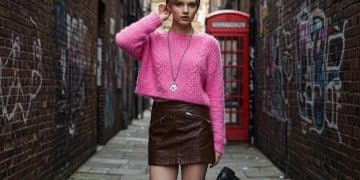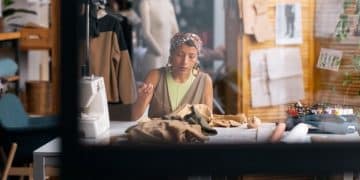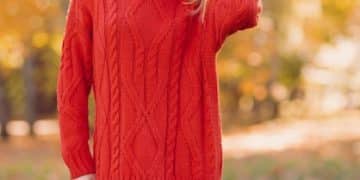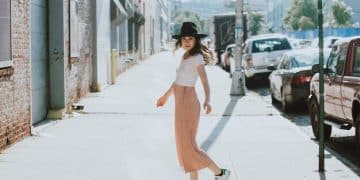Sustainable Style: Eco-Friendly Outfit Ideas for Your Wardrobe
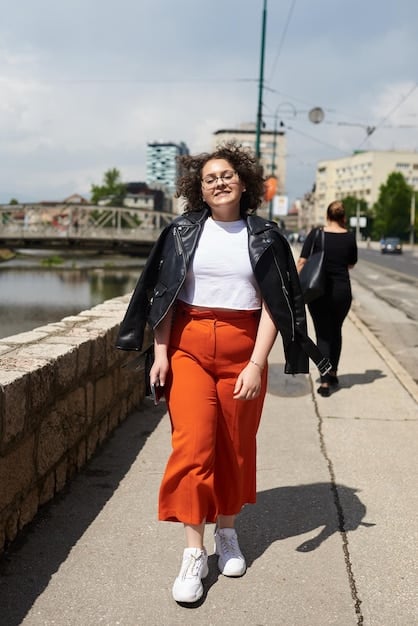
Sustainable style focuses on creating an eco-friendly wardrobe by choosing ethically produced, durable, and versatile clothing items that minimize environmental impact and promote responsible consumption.
Want to look good and feel good about your fashion choices? Embrace sustainable style: outfit ideas for an eco-friendly wardrobe are no longer a niche trend but a conscious choice that empowers you to express your personality while minimizing your environmental footprint.
What is Sustainable Fashion?
Sustainable fashion is a movement and philosophy focused on reducing the environmental and social impact of the fashion industry. It encompasses various practices, including using eco-friendly materials, ensuring fair labor conditions, minimizing waste, and promoting transparency throughout the supply chain.
Key Principles of Sustainable Fashion
Understanding the core principles helps in making informed, eco-conscious decisions.
- Eco-Friendly Materials: Opting for organic cotton, recycled polyester, linen, hemp, and other sustainable fabrics.
- Ethical Production: Supporting brands that ensure fair wages and safe working conditions for garment workers.
- Waste Reduction: Minimizing textile waste through recycling, upcycling, and designing for durability.
By prioritizing these principles, consumers can contribute to a more sustainable and ethical fashion industry.
Embracing sustainable fashion is not just about buying eco-friendly clothes; it’s about adopting a mindful approach to consumption.
Purchasing fewer, higher-quality items that are versatile and timeless can minimize waste and reduce the need for constant replacements.
In conclusion, sustainable fashion requires both producers and consumers to rethink their habits. By focusing on quality, ethics, and environmental impact, we can pave the way for a fashion industry that respects both people and the planet.
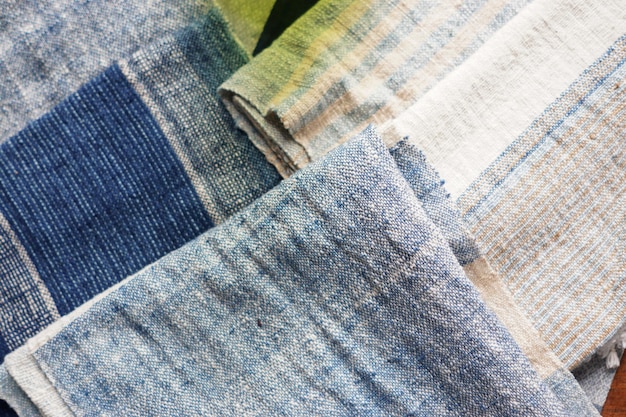
Building a Sustainable Wardrobe: The Essentials
Creating a sustainable wardrobe starts with identifying key pieces that are versatile, durable, and made from eco-friendly materials. Let’s explore some essential items.
Core Sustainable Pieces
Investing in these staples ensures a long-lasting and ethically sound wardrobe.
- Organic Cotton T-Shirts: A versatile base layer for any outfit.
- Recycled Denim Jeans: Durable and stylish, made from recycled materials.
- Linen Button-Down Shirts: Breathable and timeless, perfect for various occasions.
Selecting these core pieces allows for numerous outfit combinations while maintaining an eco-conscious approach.
Beyond specific items, consider the overall quality and craftsmanship of each piece.
Durable, well-made garments last longer, reducing the need for frequent replacements and minimizing waste, aligning with core sustainable practices.
Ultimately, building a sustainable wardrobe involves a thoughtful approach to every purchase. By choosing high-quality, eco-friendly essentials, you can create a versatile and ethical collection that reflects your values.
Outfit Ideas for Every Occasion
Demonstrating that sustainable fashion can be stylish and versatile, here are several outfit ideas for various occasions.
Casual Day Out
Combine comfort and style with these eco-friendly choices.
- Outfit: Organic cotton t-shirt, recycled denim jeans, and canvas sneakers.
- Accessories: Reusable tote bag and sunglasses made from recycled materials.
This simple yet stylish ensemble is perfect for running errands or meeting friends.
Business Casual
Look professional while staying true to your sustainable values.
- Outfit: Linen button-down shirt, chinos made from organic cotton, and loafers made from recycled leather.
- Accessories: Minimalist watch and a belt made from sustainable materials.
This sophisticated look is ideal for a business casual environment.
By thoughtfully combining sustainable pieces, you can create stylish outfits for any event.
The key is to prioritize versatility and quality, ensuring that each item can be styled in multiple ways.
In summary, sustainable fashion offers endless possibilities for creative expression. By choosing eco-friendly materials and ethical brands, you can build a wardrobe that reflects your values and enhances your style.
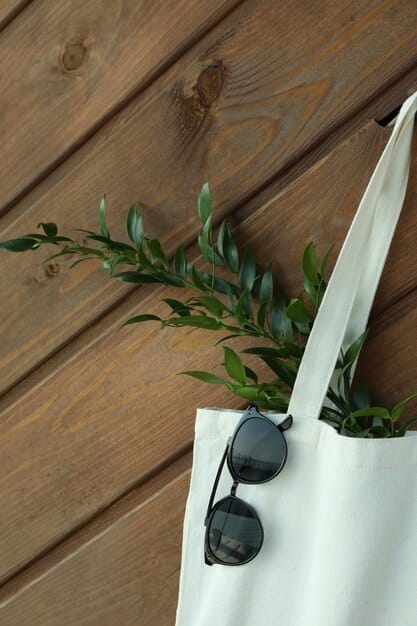
Sourcing Sustainable Brands and Retailers
Finding brands that align with sustainable and ethical values requires research, but the effort is worthwhile.
Online Marketplaces
Several online platforms specialize in curating sustainable fashion brands.
- Etsy: Features independent artisans and vintage sellers offering unique, eco-friendly pieces.
- The Good Trade: A curated marketplace connecting consumers with ethical and sustainable brands.
These platforms make it easier to discover brands committed to sustainability.
Beyond online marketplaces, look for certifications and labels that indicate a brand’s commitment to sustainable practices.
Certifications like GOTS (Global Organic Textile Standard) and Fair Trade ensure that products meet specific environmental and ethical criteria, helping consumers make informed choices.
In conclusion, sourcing sustainable fashion is an ongoing journey that involves research, awareness, and a commitment to supporting ethical brands. By exploring online marketplaces, identifying certified products, and prioritizing transparency, consumers can contribute to a more sustainable fashion industry.
Caring for Your Sustainable Clothes
Extending the life of your garments is a crucial aspect of sustainable fashion.
Sustainable Laundry Practices
Adopting eco-friendly laundry habits reduces environmental impact and prolongs the life of your clothes.
- Wash in Cold Water: Reduces energy consumption and prevents color fading.
- Use Eco-Friendly Detergents: Avoid harsh chemicals that can damage fabrics and harm the environment.
These simple changes can significantly reduce the environmental footprint of your laundry routine.
Beyond laundry practices, proper storage and maintenance are essential for keeping your clothes in good condition.
Storing clothes properly prevents damage and fading, while regular maintenance such as mending tears and replacing buttons can extend the life of your garments.
Ultimately, caring for your sustainable clothes involves a holistic approach that encompasses eco-friendly laundry practices and mindful maintenance. By adopting these habits, you can minimize waste, reduce environmental impact, and enjoy your sustainable wardrobe for years to come.
Upcycling and DIY Fashion: Reimagining Your Wardrobe
Upcycling and DIY fashion are creative ways to give new life to old clothes and reduce textile waste.
DIY Projects for Sustainable Style
Transforming old garments into new, stylish pieces is both fun and eco-friendly.
- Turning Old T-Shirts into Tote Bags: A simple and practical DIY project.
- Adding Patches to Jeans: Cover up tears while adding a unique design.
These DIY projects divert textile waste and add personalized flair to your wardrobe.
Beyond DIY projects, upcycling involves creative reuse and repurposing.
Transforming discarded items into new, valuable products minimizes waste and reduces the need for new materials, aligning with core sustainable fashion principles.
In conclusion, upcycling and DIY fashion provide innovative solutions for minimizing textile waste and maximizing creativity. By embracing these practices, you can transform old clothes into unique, stylish creations and contribute to a more sustainable fashion industry.
| Key Point | Brief Description |
|---|---|
| ♻️ Eco-Friendly Materials | Using organic cotton, recycled polyester, and linen. |
| 👗 Wardrobe Essentials | Investing in versatile, durable core pieces. |
| 🧺 Sustainable Care | Washing in cold water and using eco-friendly detergents. |
| ✂️ Upcycling & DIY | Transforming old clothes into new creations. |
FAQ
Sustainable fashion focuses on minimizing environmental impact through eco-friendly materials, waste reduction, and ethical production practices that respect both people and the planet.
Eco-friendly materials include organic cotton, recycled polyester, linen, hemp, and other sustainably sourced fabrics that have a lower environmental footprint than conventional options.
To care for sustainable clothes, wash in cold water, use eco-friendly detergents, store properly, and repair any damages promptly to prolong their lifespan and reduce environmental impact.
Sustainable fashion brands can be found on online marketplaces like Etsy and The Good Trade, as well as through certifications like GOTS and Fair Trade that ensure ethical and environmental standards.
Upcycling is the process of transforming old or discarded materials into new, higher-value products, helping reduce textile waste and promoting a more sustainable and circular fashion system.
Conclusion
Embracing sustainable style: outfit ideas for an eco-friendly wardrobe empowers you to make conscious fashion choices that benefit both your personal style and the planet. By prioritizing eco-friendly materials, ethical production, and mindful consumption, you can create a wardrobe that reflects your values and contributes to a more sustainable future.
